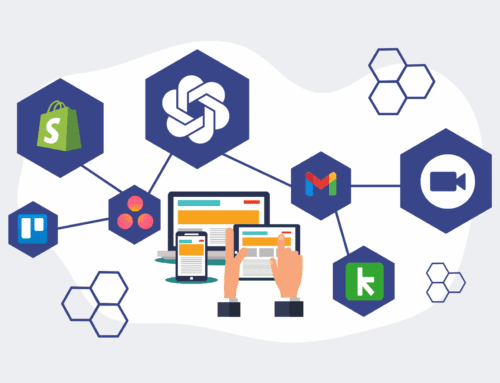How to Successfully Integrate an AI Resume Parser with Your Existing ATS: A Step-by-Step Guide
Integrating an AI resume parser into your Applicant Tracking System (ATS) isn’t just a technical upgrade; it’s a strategic move to transform your talent acquisition process. This guide provides a clear, actionable roadmap for HR leaders and recruiting professionals to seamlessly adopt this powerful technology, moving beyond manual screening toward a more efficient, unbiased, and data-driven approach. By automating the extraction and initial analysis of candidate information, you can drastically reduce time-to-hire, improve candidate experience, and empower your recruiting team to focus on strategic engagement rather than administrative overhead. Follow these steps to ensure a smooth transition and maximize the ROI of your AI investment.
Step 1: Define Your Integration Objectives and Evaluate Current ATS Capabilities
Before diving into technical specifics, clearly articulate what you aim to achieve with an AI resume parser. Are you looking to reduce manual screening time, improve data accuracy, enhance candidate matching, or mitigate bias? Understanding your primary objectives will guide your parser selection and integration strategy. Simultaneously, conduct a thorough assessment of your existing ATS. Identify its current resume processing limitations, data fields, API capabilities, and any existing integrations. This foundational step helps pinpoint potential integration challenges and ensures that the chosen AI parser can genuinely complement and extend your ATS’s functionality, rather than create redundancy or conflict. Documenting these requirements upfront is crucial for a successful and targeted implementation.
Step 2: Research and Select a Compatible AI Resume Parser
With your objectives and ATS capabilities clearly defined, the next critical step is to identify an AI resume parser that aligns with your specific needs. Look for parsers known for high accuracy in extracting key data points—such as contact information, work experience, skills, and education—from diverse resume formats. Compatibility with your ATS is paramount; verify if the parser offers native integrations or robust API documentation that can be leveraged with low-code platforms like Make.com. Consider the parser’s ability to handle various languages, redact sensitive information for compliance, and its built-in features for custom data extraction. Request demos and trials to evaluate accuracy and user experience firsthand, focusing on how well it maps extracted data to your ATS’s existing fields.
Step 3: Plan the Data Flow and Mapping Strategy
A successful integration hinges on a meticulously planned data flow. Work with your IT or an automation consultant (like 4Spot Consulting) to design how resume data will travel from its initial intake (e.g., career page, job boards) through the AI parser and into your ATS. This involves identifying which specific fields in the resume parser will map to corresponding fields in your ATS. For instance, “Candidate Name” in the parser must correctly populate “First Name” and “Last Name” in your ATS. Consider potential discrepancies and how to handle them, perhaps through custom logic or data transformation rules. A clear data mapping strategy prevents data silos, ensures consistency, and allows for accurate reporting and candidate search functionality within your ATS.
Step 4: Configure and Test the Integration Workflow
This step moves from planning to execution. Utilize your ATS’s integration features, the AI parser’s API, or an integration platform like Make.com to build the connection. For custom or complex integrations, a low-code automation platform provides the flexibility to create robust workflows that include data parsing, transformation, and conditional logic. Thorough testing is non-negotiable. Start with a small batch of diverse resume samples—varying in format, content, and complexity—to ensure that all data fields are correctly extracted and populated within your ATS. Validate that the data lands in the right places, is free of errors, and triggers any subsequent ATS automations (e.g., sending an acknowledgment email). Iterate on testing until the workflow is consistently reliable.
Step 5: Implement Training and Change Management for Your Team
Technology is only as effective as its adoption. Once the AI resume parser is successfully integrated, provide comprehensive training for your recruiting team and any other stakeholders who will interact with the new system. Cover the “why” behind the integration, highlighting the benefits like reduced manual work and improved candidate quality. Demonstrate how to use the new parser, what to expect from the automated data entry, and how to troubleshoot minor issues. Address any concerns about job displacement by emphasizing that AI tools are designed to augment human capabilities, freeing up recruiters for more strategic, high-value tasks. A strong change management plan, including ongoing support and feedback channels, is vital for smooth adoption and long-term success.
Step 6: Monitor Performance, Gather Feedback, and Optimize Continuously
Integration isn’t a one-time event; it’s an ongoing process of refinement. Establish key performance indicators (KPIs) to monitor the impact of your AI resume parser, such as reduction in screening time, improvement in data accuracy, and recruiter satisfaction. Regularly collect feedback from your recruiting team on their experience with the new system. Are there specific resume types causing parsing errors? Are certain data fields consistently miscategorized? Use this feedback to identify areas for optimization. This might involve fine-tuning the parser’s settings, adjusting data mapping, or enhancing your ATS configurations. Continuous monitoring and iterative improvement ensure that your AI resume parser remains a valuable, evolving asset in your talent acquisition strategy.
If you would like to read more, we recommend this article: The Strategic Imperative of AI in Modern HR and Recruiting: Navigating the Future of Talent Acquisition and Management








